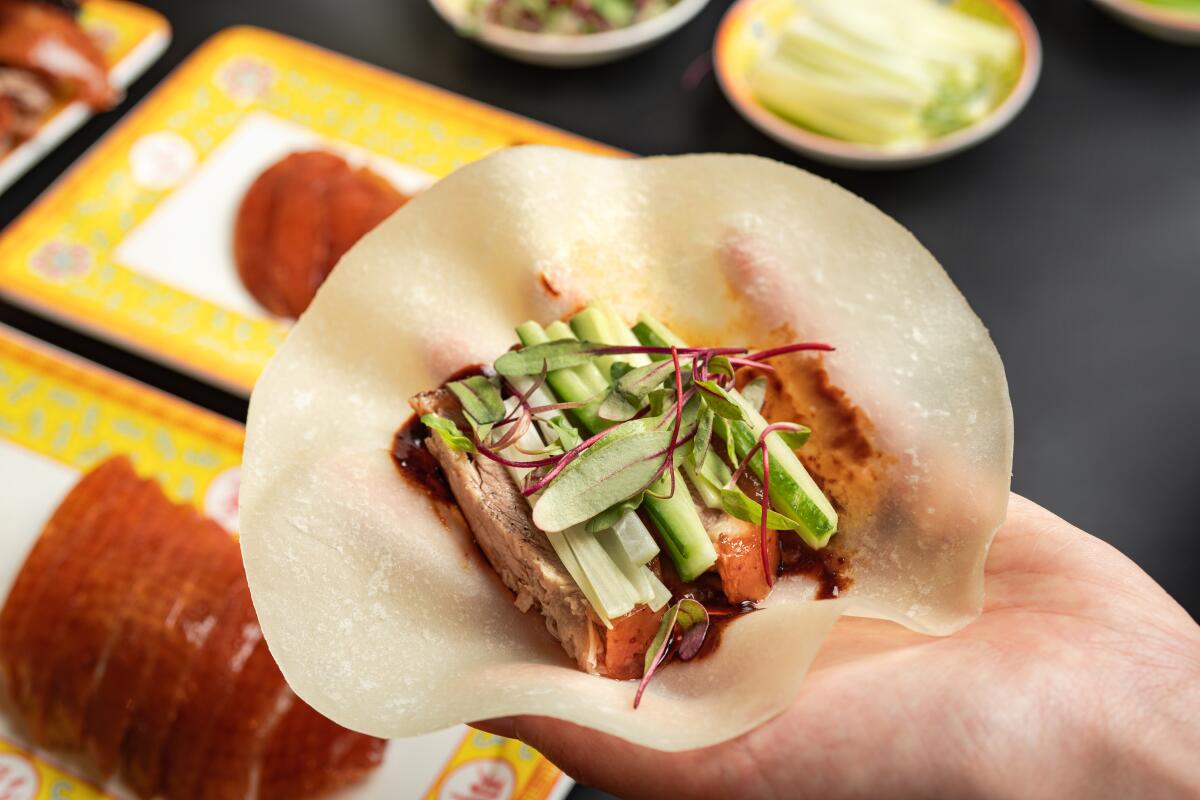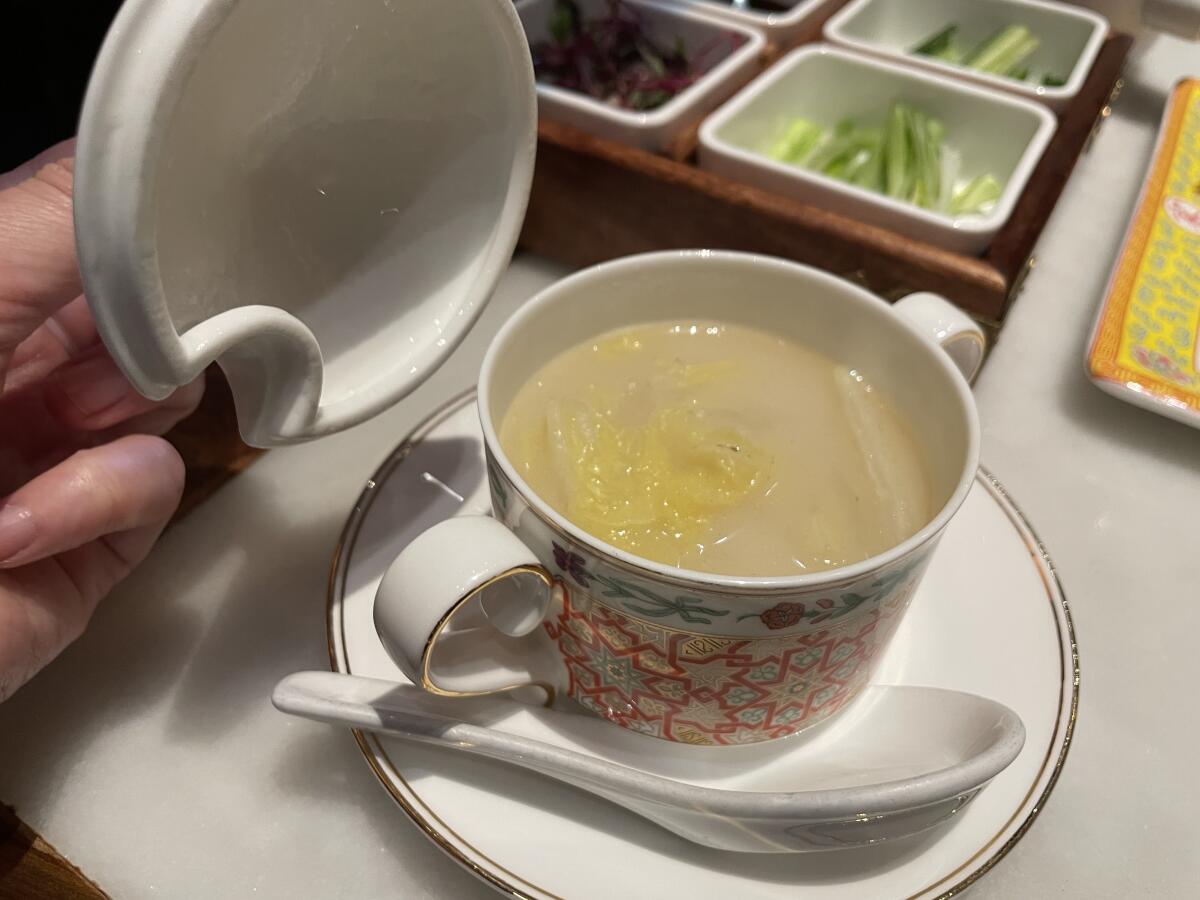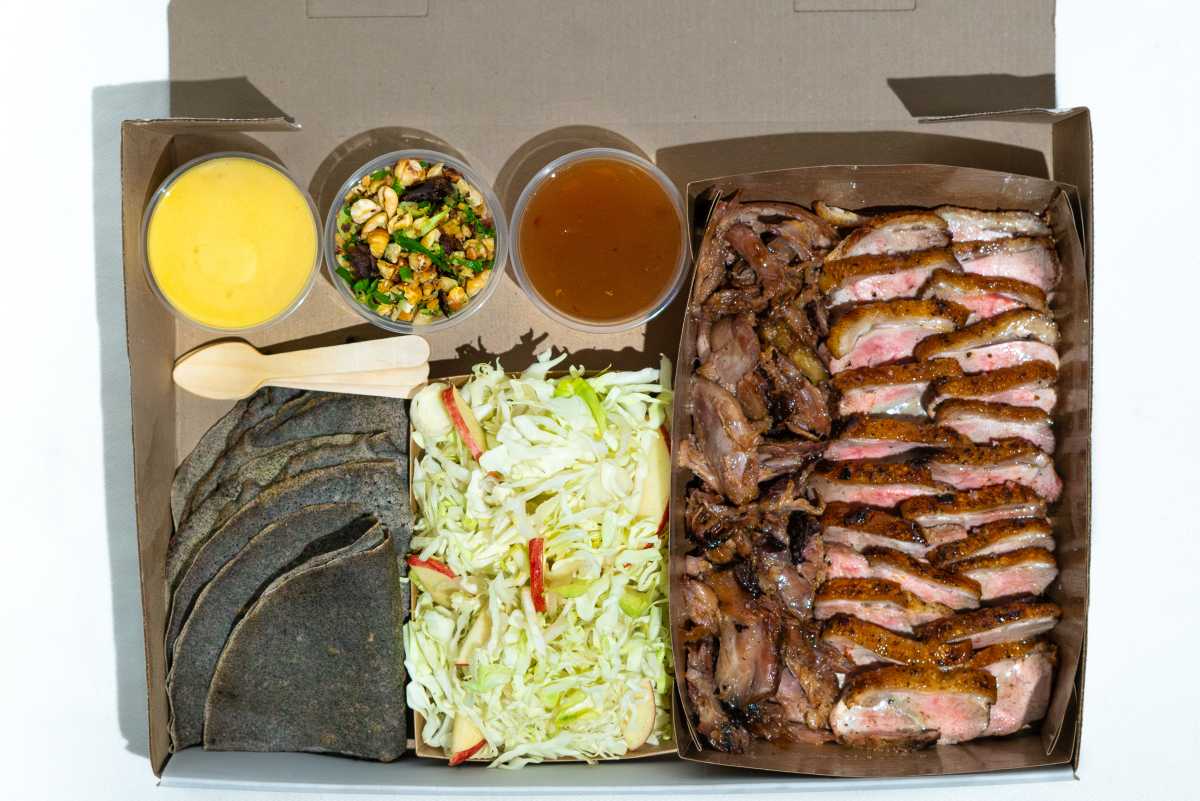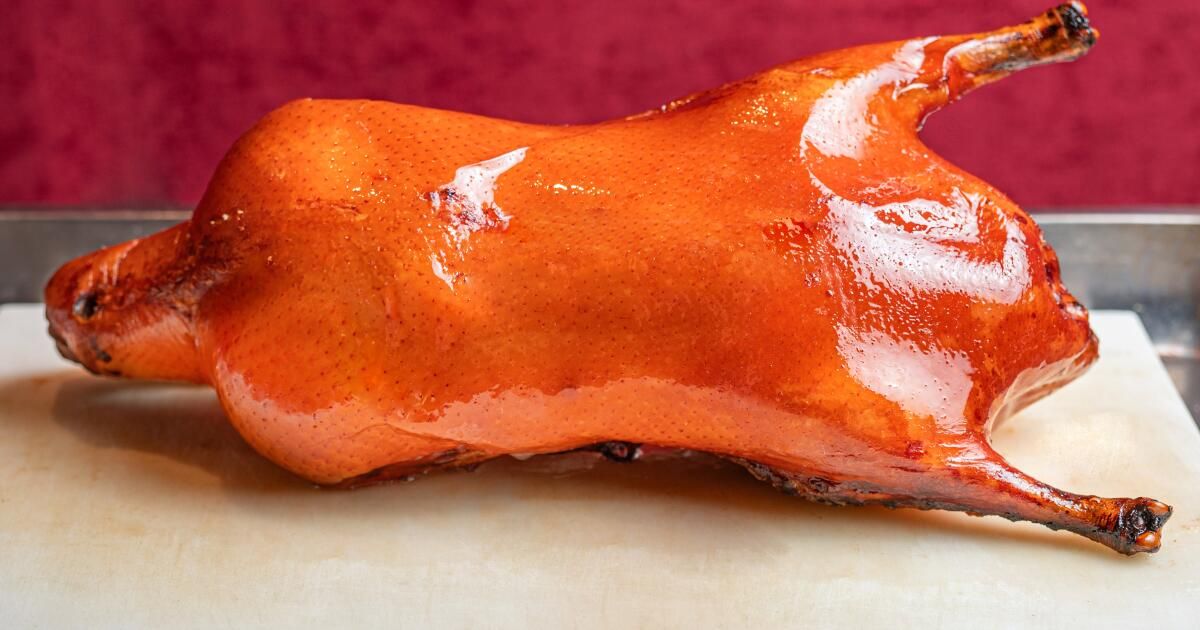People often ask me where to find the best Peking duck. It’s a question that comes up all year round, but most often during the holidays. And especially now, with Lunar New Year celebrations on the horizon in February.
Strangers come into my DMs and want to know what restaurants make the duck and if it comes with pancakes or bao. They ask about the price and if it is necessary to order in advance.
They’ve made me feel like a personal concierge to the Peking Duck, and it’s a position I don’t take lightly. Roast duck is a favorite dish of emperors; Emperor Qianlong of China is rumored to have eaten roast duck eight times in two weeks during his reign in the 18th century. Peking duck even played a role in global politics: Chinese Prime Minister Chou En-lai served the dish to Henry Kissinger in the 1970s.
Inspired by the many inquiring minds that have contacted me over the past few weeks, I set out to see if my usual favorite, Ji Rong Peking Duck on East Valley Boulevard, is still the best option. There, the duck is presented as a mound of roast meat on a plate surrounded by sheets of crispy skin. The legs are spread out onto another plate, along with ramekins of scallions, diced cucumber, sweet bean sauce, and a steamer basket full of chun bing chiffon pancakes.
On my last visit, the meat was disappointingly drier and the skin not as crispy as I remember. Meizhou Dongpo in Arcadia still serves top-quality Peking duck. But this week a new favorite emerged.
Na’s Peking Duck from Na’s Bistro
Na’s Peking Duck from Bistro Na’s restaurant.
(Ariel IP)
Na’s Peking duck is presented whole to the table, its shiny skin the color of golden honey. He looks incredibly plump, as if at any moment he might burst spontaneously. After audible gasps from diners and many photos, they take it back to the kitchen to cut it.
A few minutes later, a chef in a hat and crisp white coat emerges with the sliced duck neatly arranged on several plates. He serves the duck with a plate of sugar and instructs her to dip the meat. The glowing skin has a kind of ethereal freshness, with a texture that cracks and then melts. The sugar seems to expand and dull the richness of the skin at the same time, giving it the addictive qualities of your favorite bag of chips.
While you eat the meat dipped in sugar, the chef tends to a cart that he has slid against the table. It’s filled with a bamboo steamer basket filled with chun bing and an antique-looking wooden box housing bowls of sliced scallions, cucumber, a sweet flour sauce, and bull microblood in a deep purple hue.
He proceeds to prepare each person at the table their first duck wrap, spreading some sauce on a pancake and then layering it on two pieces of meat. Add cucumber, a few strands of chives and a little bull’s blood. He then wraps the pancake in a pretty roll and presents it as a gift.

Peking duck from Bistro Na inside a steamed pancake.
(Ariel IP)
The pancake is thin enough to be translucent, satisfyingly chewy, and mild in flavor. Bistro Na chef Tian Yong makes his own sauce for the duck, incorporating Huadiao rice wine, sesame oil and sugar. It’s sweet but not overpowering and much more subtle than the hoisin sauce used to accompany duck at many other restaurants. The mild but nutty bull’s blood will change with other vegetables depending on the season.
“The Peking duck I prepare has the traditional taste of Peking duck from ancient Beijing, a delicacy that was once only available in the royal palace during the Qing Dynasty,” Yong said.
Yong estimates he spent two years developing his preparation method and finally introduced duck to the menu in late November. He started with just three ducks a day, gradually increasing the number to five and now eight. To order duck it will be necessary to make a table reservation and request the dish at least two days in advance.
“The limitation is necessary due to the complex preparation process and our limited space,” Yong said.
The repetitive and meticulous process takes three days to complete and involves marinating the duck, blanching the skin, and hanging and drying the duck several times before roasting.
The duck is served in three stages: first with the skin and meat crispy, then wrapped in the pancake, and finally in a soup or as fried bones. When ordering, you specify the third preparation. I prefer the soup, which acts as a calming respite between bites of splendid crispy skin. The gamey undertones of the duck are subtle but present in the milky broth, served in a small cup filled with soup and wilted cabbage.

Duck Soup made with Na’s Peking Duck at Bistro Na’s.
(Jenn Harris / Los Angeles Times)
The whole duck, pancakes and condiments are $98. Soup and fried bones are available for an additional charge.
I suspect having the chef prepare and deliver that first duck wrap is the closest thing to feeling like a king. It was a feeling that lasted through lunch but quickly faded in the driver’s seat of my Prius on the ride home.
duck duck

Duck’s Duck, Eric Greenspan’s virtual duck restaurant.
(Eric Greenspan)
Duck at Duck, Eric Greenspan’s new virtual restaurant, is not your traditional Peking duck. But it is a duck just as great and worthy of a celebration. Greenspan’s duck is delivered in a box through Postmates, with various seasonings meant to mimic traditional Peking duck toppings.
After spending half a decade creating virtual restaurants like Mr. Beast Burger and an entire virtual food court called Alt/Grub/Faction, the one-time top chef at Patina restaurant turned his attention to duck.
“Even when I was doing the ghost kitchen stuff, I was thinking about what the high-end delivery game would be like,” Greenspan said. “It has to be something that people share and that is experiential. Duck!”
Duck is a dish that Greenspan frequently served on his tasting menus at Patina, and was highly featured at his later Foundry restaurant.
“It’s not Peking duck, but it’s inspired by it,” he said. “I wanted to make it clear that this is not a Chinese performance but at the same time give little clues so that people knew that I was paying tribute to him.”
Greenspan exclusively uses ducks from Joe Jurgielewicz & Son, Ltd., a company that sources its birds from farms in Pennsylvania. Grill the breasts until the fat on the skin begins to render and crisp up, then brush them with reduced apple cider vinegar, black pepper, rice wine vinegar, and a little of the gelatin that forms from the confit. duck. The meat, cooked rare and cut into thin slices, seems to be saturated with its own juice.
Greenspan cures his duck legs in an anise-rich mixture of salt, pepper, and anise seeds and slow-cooks them in duck fat. Then he glazes the legs in a sauce based on caramelized garlic in panela, rice wine vinegar and soy. The sweet glaze evokes that little dish of sugar served in a more traditional presentation of Peking duck, enhancing the flavors of the meat. Serve the boneless leg meat as if it were a pile of crumbled duck caramel.
As nice as the duck is on its own, Greenspan’s condiments may be the most fun elements of the presentation. Instead of chun bing, there are thin buckwheat crepes enriched with duck fat and brown butter. They are flexible and sturdy enough for a stack of duck, making them the ideal meat container.
Shredded napa cabbage, Belgian endive and apple mixed with a rice wine vinegar dressing provide a pleasant freshness and replace the traditional chives and cucumber. There’s also a tangy honey mustard and a plum sauce dressed with roasted apples. And for some crunch, there’s a cup of duck-ah, a fun take on crunchy dukkah condiment. Greenspan’s version is made with crispy fried duck skin, toasted hazelnuts, scallions, and garlic.
Greenspan plans to offer the duck, priced at $85 per set, once or twice a month through Postmates. Sometimes he might make duck wings, fried and sprinkled with lemon, pepper and five spice. He is also looking to collaborate with different chefs in the city.
“Once the train of imagination leaves the station, it’s hard to put it back on,” he said.
The next installment of Duck is scheduled for January 25. Availability and updates are posted on Duck’s Instagram page.
Where to get Peking duck
Bistro Na’s, 9055 Las Tunas Drive, #105, Temple City, (626) 557-4179, bistronas.com
Duck, instagram.com/duckdelivery
Ji Rong Peking Duck, 8450 E. Valley Blvd., Rosemead, (626) 280-8600, jirongpekingduck.com












